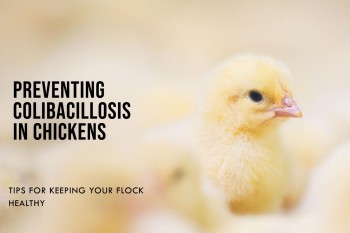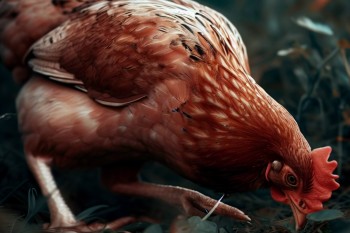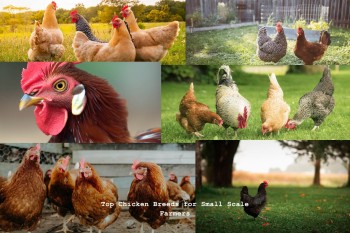Unraveling Coryza: Avian Disease 🐔
Coryza, also known as Infectious
Coryza, is a highly contagious respiratory disease that primarily affects
chickens. It is caused by the bacterium Haemophilus paragallinarum, with three
serotypes (A, B, and C) recognized. Coryza poses a significant challenge to the
poultry industry, leading to reduced egg production and compromised flock
health. In this comprehensive blog post, we will explore the etiology,
occurrence, transmission, clinical signs, pathology, diagnosis, treatment,
prevention, and control strategies related to Coryza. By understanding the
complexities of this disease, poultry farmers can effectively manage and
prevent its spread, safeguarding the well-being of their flocks.
Etiology
Coryza is caused by the bacterium
Haemophilus paragallinarum, a gram-negative, pleomorphic coccobacillus. The
bacterium primarily infects the upper respiratory tract of chickens. Three
serotypes (A, B, and C) have been identified, with serotype A being the most
prevalent and clinically significant. Each serotype may vary in terms of
virulence and geographical distribution.
Occurrence
Coryza is encountered in
poultry-raising areas worldwide, although it is more prevalent in specific
regions or countries. The disease can manifest as a chronic problem or occur
seasonally. Factors such as environmental conditions, bird density, and
management practices can influence the occurrence and severity of Coryza
outbreaks. Commercial multi-age laying and breeder operations are particularly
vulnerable, experiencing a significant decrease in egg production when affected
by the disease.
Transmission
The transmission of Coryza occurs
through direct and indirect contact. Direct contact with clinically affected
birds or asymptomatic carriers is a common mode of transmission. The bacterium
can be present in nasal and ocular secretions, as well as conjunctival exudates,
facilitating its spread from bird to bird. Indirect transmission can occur
through contaminated equipment, personnel, or other fomites. It is important to
note that Haemophilus paragallinarum does not survive outside the host for
extended periods, with viability typically limited to 24 hours.
Clinical Signs
Coryza can manifest in various
forms, with clinical signs varying in severity. The following signs may be
observed:
- Morbidity rates typically range
from 1 to 20%, depending on the virulence of the infecting serotype and the
susceptibility of the flock.
- Mortality is generally low,
unless the disease is complicated by secondary infections such as respiratory
pathogens or other bacterial agents.
- Reduced egg production is a
characteristic consequence of Coryza, leading to economic losses for commercial
operations.
- Ocular discharge is a hallmark
sign, which can be unilateral or bilateral. The discharge may vary in consistency,
ranging from serous to mucopurulent.
- Facial cellulitis,
characterized by inflammation and swelling of the tissues around the eyes, is a
common finding.
- Chronic sinusitis is often
observed in long-standing cases, resulting in the accumulation of serous or
caseous exudates within the sinuses. This can lead to facial deformities and
respiratory distress in affected birds.
Pathology
The pathology of Coryza primarily
affects the respiratory system, with the nasal passages, sinuses, and associated
tissues being the main sites of infection. The severity and duration of the
disease determine the extent of pathological changes observed:
- Acute cases are characterized
by severe conjunctivitis, marked by redness, swelling, and discharge from the conjunctival
membranes. Inflammation of the periorbital fascia, the tissues surrounding the
eyes, can also occur.
- Chronic cases often exhibit
serous to caseous sinusitis, indicating persistent inflammation and the
presence of caseous (cheese-like) material within the sinuses. This chronic
inflammation can result in adhesions, fibrosis, and tissue destruction.
Diagnosis
The diagnosis of Coryza involves
a combination of clinical evaluation, laboratory testing, and bacteriological
analysis. Key diagnostic methods include:
- Clinical examination: A
thorough evaluation of the flock, including observation of clinical signs,
history of disease, and pattern of morbidity and mortality.
- Bacteriological culture:
Samples collected from affected birds, particularly nasal swabs and sinus
contents, can be cultured on selective media to isolate and identify
Haemophilus paragallinarum. The bacterium's growth characteristics and
biochemical reactions aid in confirming the diagnosis.
- Molecular techniques:
Polymerase chain reaction (PCR) assays can be employed for rapid and specific
detection of Haemophilus paragallinarum DNA, enhancing diagnostic accuracy.
Treatment
The treatment of Coryza aims to
alleviate clinical signs, control secondary infections, and prevent further
spread within the flock. However, it is important to note that some drugs used
for treatment may leave residues in eggs and have adverse effects on egg
production and shell quality. Therefore, treatment strategies may vary based on
the age and purpose of the flock:
- Immature birds can be treated
with water-soluble sulfonamides, which are effective against Haemophilus
paragallinarum. However, caution should be exercised when administering
sulfonamides to mature flocks due to potential adverse effects.
- Tetracyclines, either
administered via drinking water or by the intramuscular route, are commonly
used to treat Coryza. Combination therapies with other antibiotics may be
necessary in cases of secondary bacterial infections.
After treatment, it is essential
to follow compulsory or recommended withdrawal periods before marketing eggs
from treated commercial flocks to ensure consumer safety.
Prevention and Control
Preventing the introduction and
spread of Coryza is crucial for maintaining flock health and minimizing
economic losses. Key prevention and control strategies include:
- Biosecurity measures:
Implementing strict biosecurity protocols to prevent the entry and spread of
Haemophilus paragallinarum within the farm. This includes controlling access,
limiting visitor interaction, disinfecting equipment, and maintaining good
hygiene practices.
- Vaccination: Vaccination plays
a vital role in preventing Coryza. Inactivated multivalent or homologous
bacterins in aqueous suspension or oil emulsion can be administered to immature
flocks. Vaccination protocols should adhere to manufacturer recommendations,
usually involving two doses given at four-week intervals during the rearing
period. Vaccination of breeding flocks can also be considered to reduce the
risk of transmission to progeny.
- Genetic selection: Breeding for
increased resistance to Coryza can be a long-term strategy for disease control.
Identifying birds with improved immune responses and selecting them as breeding
stock can help develop more resilient flocks.
Regular monitoring of flocks,
prompt diagnosis of clinical cases, and early implementation of appropriate
control measures are essential for effective disease management.
Coryza, caused by Haemophilus
paragallinarum, poses a significant challenge to the poultry industry due to
its highly contagious nature and impact on egg production. Understanding the
etiology, transmission, clinical signs, pathology, diagnosis, treatment, and
prevention strategies related to Coryza is crucial for effective disease
management. By practicing stringent biosecurity measures, promptly diagnosing
and treating affected birds, implementing vaccination programs, and considering
genetic selection for resistance, poultry farmers can mitigate the spread of
this stealthy avian disease. Through proactive measures and vigilance, the
poultry industry can safeguard the health and productivity of their flocks. 🐔🚫
















